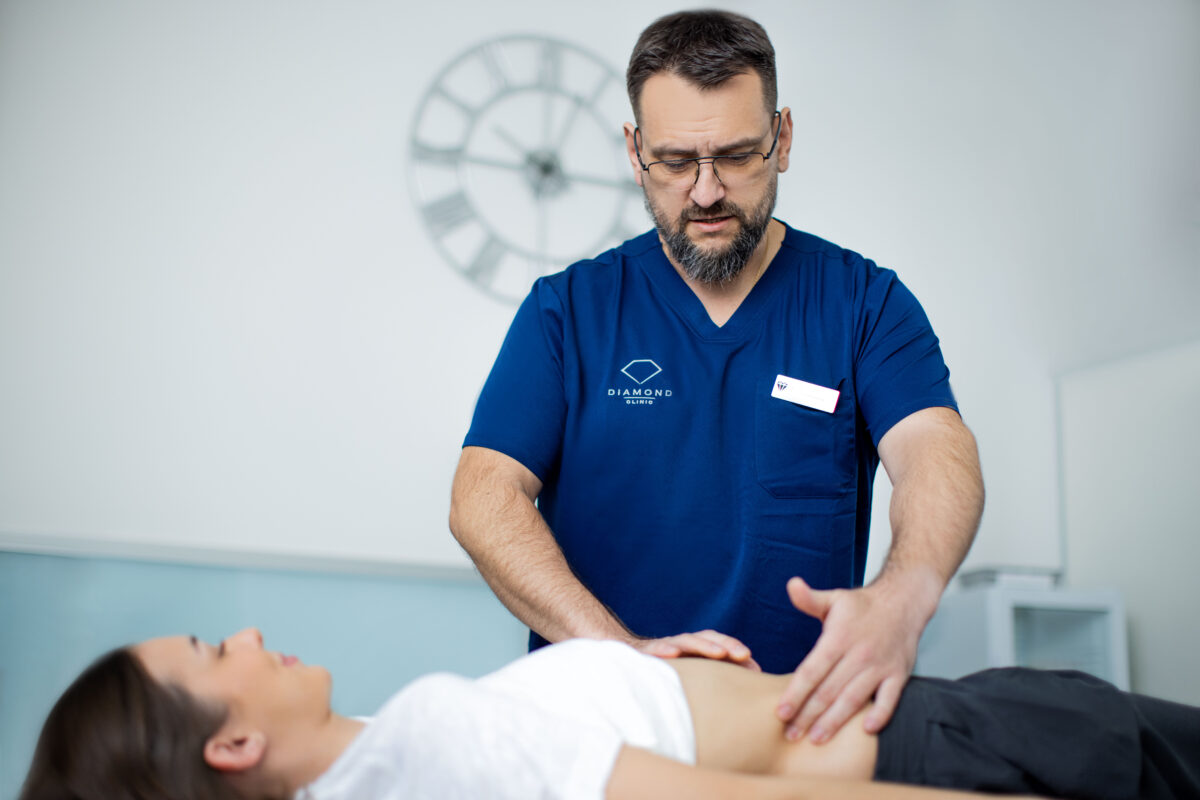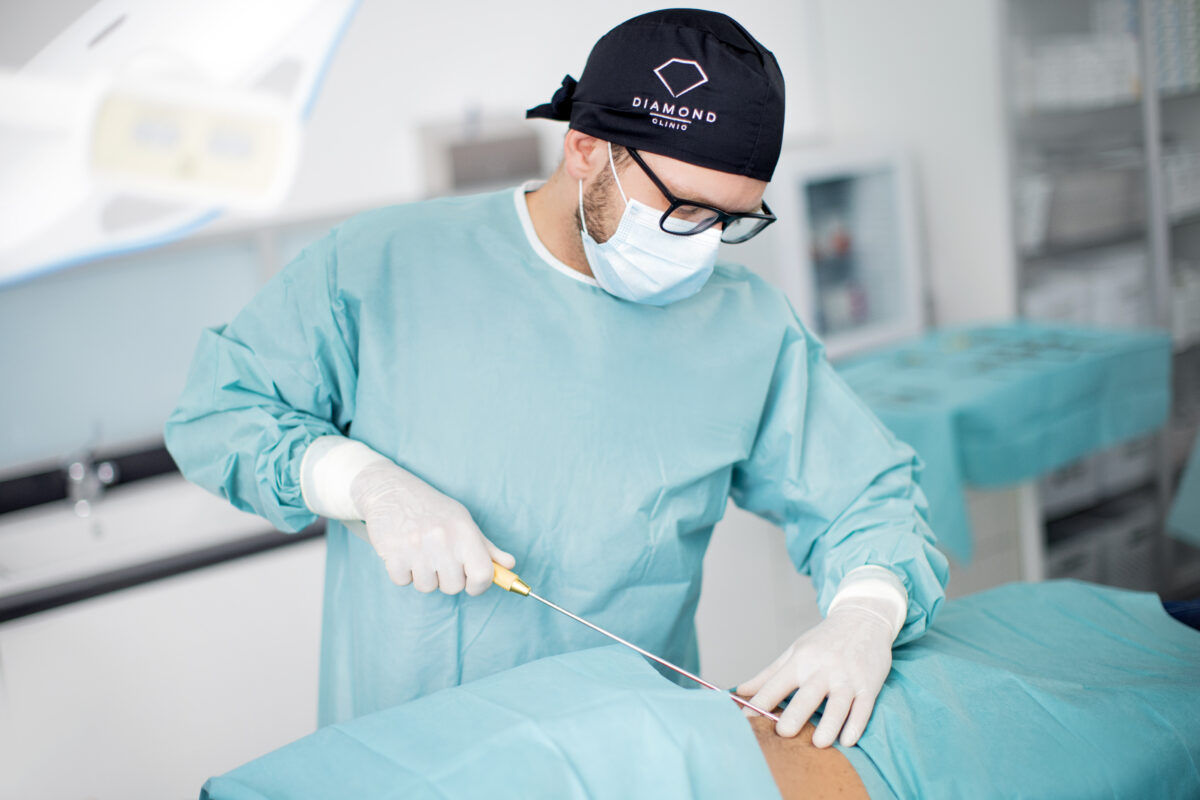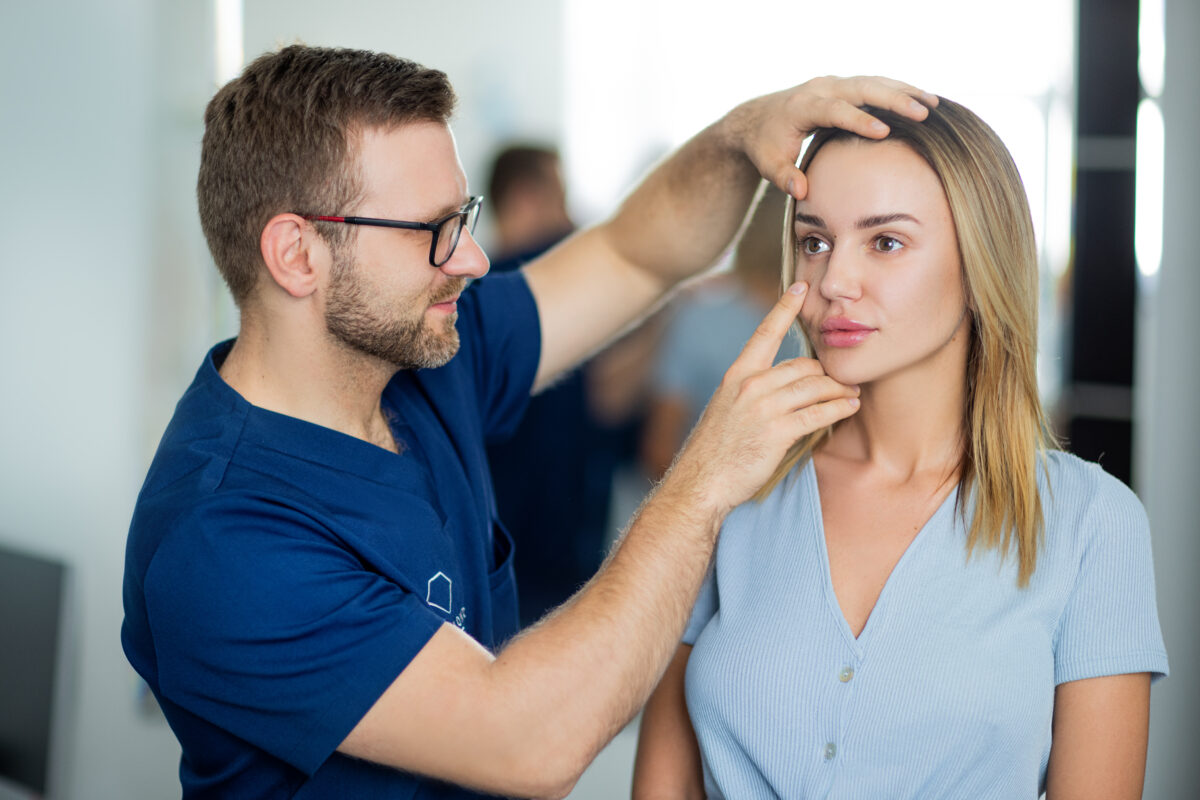Cosmetic surgery
There are many solutions and methods available for the surgical treatment of hernias, but specialists are increasingly opting for laparoscopic surgery due to the reduced post-operative pain and the much shorter recovery period. After laparoscopic hernia surgery, the patient recovers more quickly and recovers from everyday activities. In addition, laparoscopic hernia surgery leaves very little visible scarring. However, not every case can be operated on in this way.
If the patient has had previous surgery in the area where the hernia originated, it may not be possible to perform the operation using the laparoscopic method due to adhesions. In such cases, doctors recommend performing the operation in the classic way, usually using the Lichtenstein method.
Open surgery – the classic method – is also recommended when the patient’s state of health makes it impossible to perform the operation under general anaesthesia.
Laparoscopic hernia surgery
The vast majority of surgeons prefer laparoscopic tension-free hernia treatments, i.e. those that use synthetic mesh to reinforce the abdominal shell. These are safe procedures, which have a high success rate and a very low recurrence rate. The meshes can be implanted during classical surgery with an incision of the abdominal integuments (Lichtenstein operation, Gilbert-Rutkow operation, PHS – Prolene Hernia System) or during laparoscopic procedures (TAPP, TEP, IPOM operations). Laparoscopic surgery is becoming increasingly popular for inguinal hernia repairs, with the main advantages being significantly less postoperative pain, faster recovery and full physical fitness and activity, and a better cosmetic result. However, this type of procedure also has its limitations.
An inguinal hernia is removed laparoscopically primarily to treat bilateral development of the condition and its recurrence in a previously operated site. Another indication for laparoscopic surgery is the coexistence of another disease, such as gallbladder stones, which can be treated together with the hernia during the same surgical procedure. The use of laparoscopy should also be considered in young, physically active people who are particularly concerned about a rapid return to full function. The European Hiatal Hernia Society also recommends it for the treatment of inguinal hernia in women, due to the higher risk of recurrence after classical surgery than in men, and for unilateral inguinal hernias when the surgeon is adequately trained in laparoscopic technique.
Laparoscopic hernioplasty is performed in three ways:
- TAPP (Transabdominal Preperitoneal)
- TEP (Totally Extraperitoneal)
- IPOM (Intraperitoneal On-lay Mesh)
In TAPP and TEP operations, the mesh is sutured preperitoneally, i.e. outside the peritoneum separating the internal abdominal organs. However, these methods differ in the surgical access to the inguinal region. In TAPP surgery, the laparoscopic instruments with which the operation is performed are placed in the abdominal cavity. In TEP hernia operations, the inguinal region is accessed through the abdominal integuments without opening the abdominal cavity (completely pre-peritoneal access). In the IPOM method, the operating physician places the surgical instruments in the abdominal cavity and fixes the mesh intraperitoneally, i.e. on the inner peritoneal surface of the abdominal wall.
Lichtenstein laparoscopic hernia operation
For patients who have contraindications to laparoscopic surgery, classical methods are recommended.
In the case of inguinal hernia surgery, the recommended method for open surgery is the Lichtenstein method, which involves making a skin incision (approximately 10-15 cm) in the groin area. In the next stage, the surgeon dissects the subcutaneous tissue and fascia to reach the inguinal canal. After securing the vessels, the doctor locates the hernia sac, which is then drained into the abdominal cavity. The inguinal canal is secured with a hernia mesh, which is then covered with the stretches, muscles and fascias of the abdominal wall and, in the final stage, with skin. A drain is placed in the post-operative wound, which is usually removed on the following day after surgery.
Hernia operations are performed in our clinic by Kamil Bury, MD.
Hernia Repair Surgery
- inguinal hernia
- umbilical hernia
- ventral hernia
- white line hernia
- getting rid of pain
- increased quality of life






